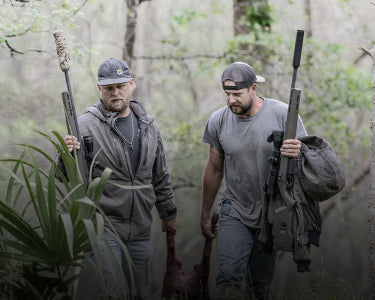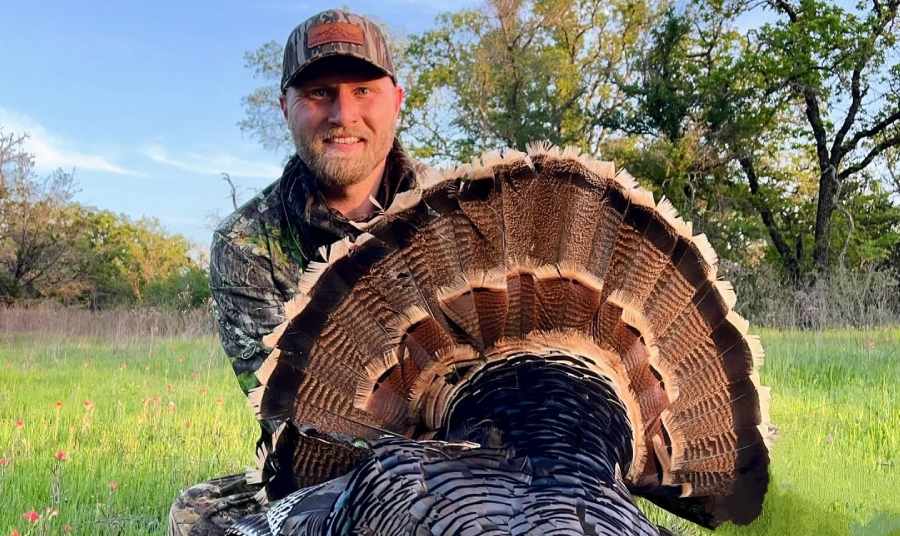My dad always said that once he’d hear the spring frogs croaking, he knew it was time to hunt turkeys. As a young child, I was able to tag along with my dad on a handful of turkey hunts. He toted an old Remington 870 Wingmaster, which now resides in my gun safe. I don’t actually remember him ever killing a turkey. Maybe the numbers were down, or maybe he was just a really bad turkey hunter (most likely the case).

Fast forward 29 years, and I’d become an avid turkey hunter, covering multiple states every season. I ran that old Winchester every season until just a few years ago. Like everything else, technology has come a long way in a short amount of time. This is no different with turkey hunting. My main turkey hunting partner, Rod Gilbert, told me about a shotgun load called Tungsten Super Shot, (TSS) about 4 years ago. Rod is an excellent turkey caller, and is in fact a Regional Hoot Owl champion, so there’s no one I trust more to educate me about turkey hunting. He's got the best hooters in turkey camp.
TSS is 56% denser than lead shot. Since this shot is so much denser, it allows you to send smaller shot sizes downrange without losing killing power. In the past, I would shoot Winchester Longbeard XR 5 shot in 12 gauge. The Winchester engineers claim there are approximately 311 pellets in one of these loads. In comparison, the 12-gauge TSS load in 9-shot from Verdict boasts a whopping 721 pellets.
Why does this matter? More pellets downrange mean more chances of killing a bird. The smaller pellets are also more aerodynamic, maintaining higher velocities at extended ranges. We’ve had success at 70 yards on turkeys with TSS loads. Sounds great, right? The main issue we’ve encountered with switching to TSS is how the pellets pattern. Typically, if you shoot birdshot at a slab of butcher paper from 20 yards, you get a nice, even pattern spanning 18 inches or so. With TSS, you can expect to get a softball-sized pattern that may not be directly centered. Enter the Red Dot. I don't know about you guys, but I don’t want to be trusting good ole Kentucky windage on a bird at 55 yards if my pattern is slightly off.
After taking the TSS plunge, I bought 2 new turkey guns in 20 gauge: a Stevens Model 301 and a Weatherby Element Turkey 20 gauge. With the ballistic advantage of the TSS shot, I deemed it unnecessary to break my shoulder with something heavier like a 12 gauge. TSS loads have a heavy charge. Some loads in 12 gauge throw back over 70 lbs. of recoil energy. The 20 gauge is half of that, and you don't sacrifice killing ability. One day, on a whim, I called the Sightmark customer service line and spoke with a rep who walked me through their dot options. It was important to find a dot that had good battery life that could survive the recoil and ruggedness of turkey hunting. We landed on the Wolverine FSR and Mini Shot M-Spec M1.
Once I received the optics in the mail, I mounted them and headed out to the range. The Wolverine is a rugged sight. Rubber-cased, a little on the larger side, but tough as nails. The battery life runs between 900 and 1,000,000 hours pending the brightness setting. This optic was perfect for the Stevens 301. I planned on giving this setup to my 11-year-old son, so it needed to be tough. Plus, I knew he'd leave it turned on and run the battery down. Within a few shots, we had the Wolverine zeroed. I mounted the smaller Mini Shot on the rail of my Weatherby. This sight is more appropriately sized to run on a pistol; however, it's sleek and rides nicely on top of my shotgun. It has a protective steel shield and can run on 1 CR1632 for up to 30,000 hours. I left it turned on last season, and it still had some juice when I took it out of the case this past March. Like the Wolverine, the zeroing process was simple, and within 4 shots, I had it ready for the woods.
Over the next few weeks, my son and I spent every weekend in the woods. A red dot is ideal for kids. There is so much going on and running through your mind when you have a 25lb bird in full strut at 25 yards, especially for an 11-year-old. You can rush the shot and miss if you don't have a proper cheek weld. Not with the dot. As long as that dot is on the turkey's head, you're good to go. Now, I'm not one to encourage bad shooting habits, but if you've ever turkey hunted with a kid, you need all the help you can get. Heck, even I needed the dot last season. I had a turkey come in on my right side, and I had to shoot left-handed… If it had not been for the ease of use with the Mini Shot, I’d have never made that shot. The dot is also very helpful on longer shots. Have you ever held a shotgun bead on a turkey's head at 60 yards? The bead is twice the size of the Gobbler's head. A nice small red dot is much easier to get situated.
Overall, if you're looking to take the TSS plunge or just give your old setup a new life, you can't go wrong with adding a red dot. I highly recommend the Wolverine FSR and the Mini Shot M-Spec M1. They are tough, easy to operate, and just flat out work. If you can’t decide which model is best for you, don’t hesitate to pick up the phone and call Sightmark's Customer Support. That poor rep was on the phone with me for upwards of 45 minutes. He was great and had all the answers I was looking for. Good luck this season!
 25 yard pattern |
 40 yard pattern |



